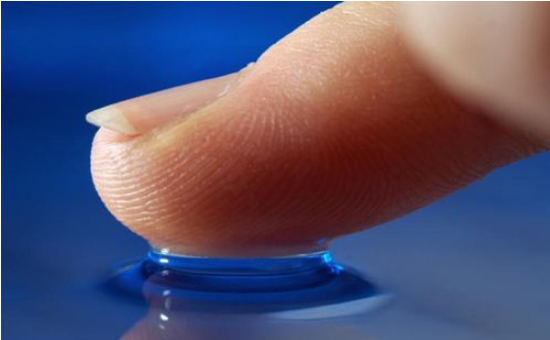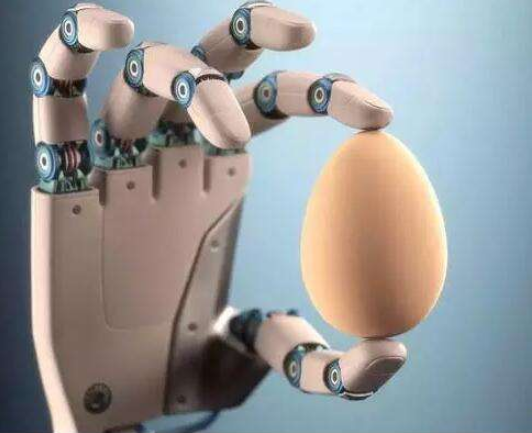Give a pressure and also an electrical signal. A simple shift in the tactile sensor allows the real world to be passed to the robot in a "binary" way.
“A little bit of pressure can produce a matching current.†After adding the adjective, the transition was a bit difficult. Yang Pengfei, an associate professor at Northwestern Polytechnical University, explained that it would sensitively capture the “slightly†input and give a strictly matched output. .

“Requires stable, accurate output, and eliminates coupling interference between different “dimensions.â€â€ The further interpretation of Song Aiguo, a professor at Southeast University, means that this transformation is more difficult.
The stable realization of this signal transformation enables the palm-sized Japanese array products to take the lead in the scientific research and industrial markets even if they sell for 100,000 yuan. "Importing" is the unanimous answer by the Science and Technology Daily reporter to investigate the consumers of this product.
In the industry, the process is not closedAccurate and stable demanding requirements have stopped most of China's enterprises from moving toward tactile sensors. At present, domestic sensor companies are mostly engaged in the production of sensors such as gas and temperature. In an industry with more than 100 companies, almost no sensor manufacturers produce touch sensors.
“We have commissioned a company in Shenzhen to make array-type touch sensors, but because the process is not good, the consistency of the products is relatively poor, and the performance of the points and points in the sensor array cannot be the same.†Song Aiguo’s experience may not be a case. .
“Most of our key components are imported from abroad.†A domestic well-known robot manufacturing company official said that domestic products, including tactile sensors and reducers, are not well-regulated in terms of stability and consistency.
“The sensors are imported from abroad.†Yang Pengfei’s life sciences institute produces bionic machines through research on bones for aerospace or industrial auxiliary applications. “These bionic machines work in very demanding environments and require a high level of components.â€
It can be seen that for the seller, the process threshold is too high; for the buyer, the domestic goods are not guaranteed. The "one left, one right" situation has formed a vicious circle of dependence on imports and endogenous fatigue.

In addition to the production process, material purity is also a “sophisticated place†from laboratory to industrial production.
"Electrically conductive rubber, conductive plastics, carbon nanotubes, graphene, etc. are all materials that can be used as tactile sensors." Song Aiguo said that domestic material quality and production levels are not stable. "The production of graphene should be OK, but The technology of making sensors with graphene is not yet mature."
In order to obtain high-quality materials, Song Aiguo Lab will use its conductive paste to make conductive rubber that meets the standards. The conductive rubber is produced by uniformly distributing a plurality of conductive particles such as glass silver plating, aluminum silver plating, silver, and the like in the silicone rubber. Extrusion allows the conductive particles to be connected to each other to generate an electric current. The more uniform the distribution, the more regular the relationship between current generation and pressure.
Technical complexity, another hurdleIncreasingly complex technologies have also made domestic products farther and farther.
A slap-sized Japanese array sensor sells for $100,000 and maintains strict uniformity and stability. Domestic products are mostly a bit, usually 100 yuan.
According to Song Aiguo, the Japanese array sensor can distribute 100 sensitive components in a 10 cm & TImes; 10 cm size matrix. Due to the softness of the substrate, the calculation of the force in different directions and the elimination of the coupling interference between the forces make the more sensitive components The shorter the distance between each other, the harder it is to output accurately. Japan is leading in industrialization, and most other countries are in the laboratory stage.
In addition, the force dimension of each sensitive component also increases the complexity of the technology. There are six dimensions (three directions of X, Y, Z axis, and corresponding torque directions), and how the coupling interference between the dimensions is eliminated. It is also a link that needs to be exerted in basic research. "The famous Boston Power Turnover robot uses only three-dimensional touch sensors," Song Aiguo said.
There is layout, but the transformation is difficult to advanceIn China, the research on the multi-dimensional force sensor, one of the tactile sensors, has been laid out very early. Song Aiguo introduced that in 1987, Southeast University and the Hefei Institute of Mechanical Intelligence of the Chinese Academy of Sciences were supported by the 863 key special projects to develop six-dimensional force sensors. "Static accuracy has reached an error rate of only 1% - 2%, which is similar to the world's advanced level." Song Pao said frankly, but the dynamic accuracy needs further research, the dynamic coupling error is about 5% -10%, "for example, has not yet reached Requirements for the use of industrial robots for high-speed grinding tasks."

However, from the perspective of cost, "the average cost of industrial robots is about 120,000 yuan, and the cost of a six-dimensional force sensor is more than 30,000 yuan. The current domestic industrial robot market does not have the conditions for large-scale production of this product. "Song Pai said. In comparison, the cost of related products of ATI Industrial Automation Company has dropped to 20,000-30,000 yuan each.
It is undeniable that in the pursuit of original technology, the latecomer must bypass the related patent protection of the forerunner. Unless a clearer and better solution is found, it is likely to raise the threshold for technical achievement by bypassing the patent. Most of the time, the legend In the "change lane overtaking" depends on luck.
The RIMA Vehicle battery is specially designed for frequently deep cycle discharge light electric vehicles, by using the specially designed thicker grid and high density active materials plates, the battery offers reliable performance in high load situations.
Vehicle Battery are deep cycle batteries, more than 500 cycle lifes at 85% DOD.
General Features
Non-spillable
Sealed and Maintenance-free Operation
Computer –added 99.99% pure heavy-duty lead calcium grid design
Exceptional Deep Discharge Recovery
Low Self-discharge
Long Service Life
Solid Copper Terminals
Container formed Plates
Standards:
Compliance with IEC, BS, JIS and EU standards.
UL, CE Certified
ISO45001,ISO 9001 and ISO 14001 certified production facilities
Application
Scooter/E-bike
Golf carts
Floor Machines
Aerial Lifts and Fork Lifts
Marine and RV
Mobility and Medical Equipment
Wheelchair
Electric Vehicles
6V Battery For Golf Cart,6V Battery Deep Cycle,6V Battery Rv,Rv Deep Cycle Batteries
OREMA POWER CO., LTD. , https://www.oremabattery.com